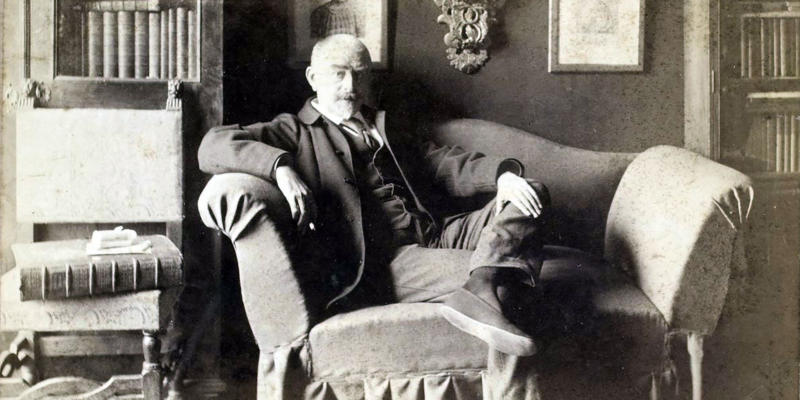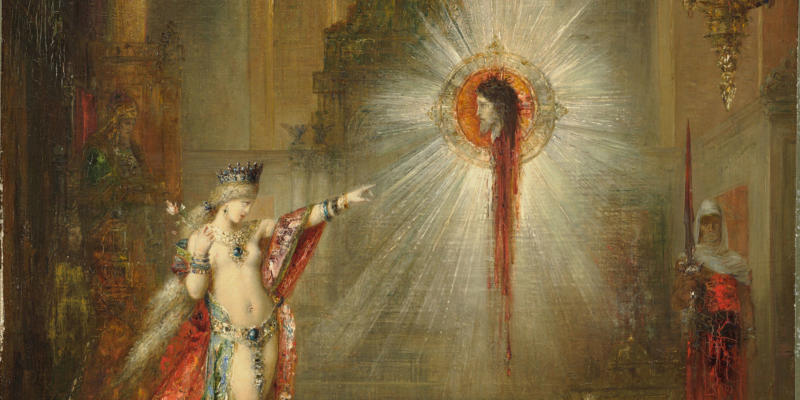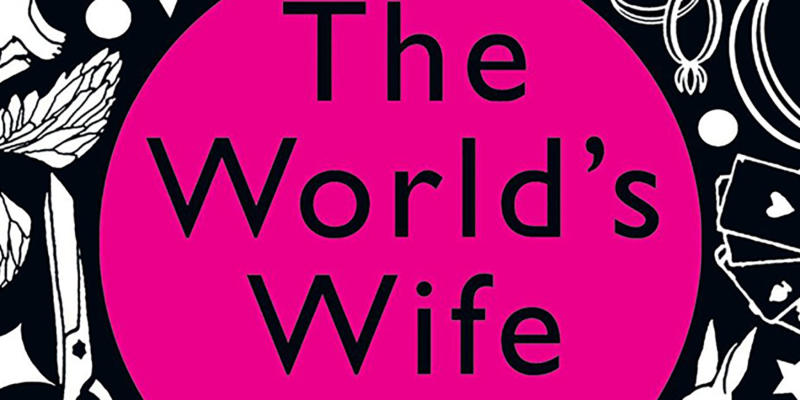Who is she? Salome in opera, art and literature
According to the Bible, Salome is the daughter of Herodias and the stepdaughter of Herod, ruler of Galilee. Prompted by her mother, Salome danced before Herod and his guests and in return, asks for the head of John the Baptist. In the biblical depictions of Salome, she is unnamed and presented as an innocent victim, caught up in her mother’s revenge against John the Baptist. This version of Salome is not the one we now know, and certainly not the one to be portrayed by artists for years to come.
The dramatic and violent story has proved a popular source of inspiration since the early periods of Christian art. Depictions of the fateful tale were especially popular in the Renaissance period (1300 – 1600), and the nineteenth century, thanks to literature such as Oscar Wilde’s Salomé. By this point, Salome was no longer an unwitting victim, but a femme fatale. In 2018 Salome’s story was told once again by ENO, this time in Adena Jacobs’s brand new production of Strauss’s opera.
We’ve taken a look at 4 different ways the Salome story has inspired different art forms; opera, literature, art and poetry.
Salome in opera
Salome – Richard Strauss
Video
In the early 1900s, German opera composer Richard Strauss saw Max Reinhardt’s production of Oscar Wilde’s Salomé; Strauss’s adaptation of the play would be his first great operatic success. In both Wilde and therefore Strauss’s versions of the Salome story, she is the mastermind behind the beheading of John the Baptist, not an innocent bystander.
Thanks to the biblical and shocking themes of the story, both the play and the opera were embroiled in great controversy when they were unveiled to the public. You can find out more about that, and other operas that shook society, in our article.
Video
Salome in literature

À rebours – Joris-Karl Huysmans
Oscar Wilde read À rebours (Against nature) (1884), the most important novel of the Decadence period (late nineteenth century), the year it was published. He would later refer to it as one of the best novels he’d ever read. The novel had such a profound effect on Wilde, he is thought to have used it as inspiration for the ‘poisonous’ book in his The Picture of Dorian Gray.
The novel contains a scene where Jean des Esseintes, the main character, becomes obsessed with two paintings of the Salome story by artist Gustave Moreau. In it, Huysmans describes the paintings in vivid detail, visualising the paintings and the context surrounding them. Wilde’s obsession with these descriptions meant he even mirrored some of the language Huysmans used in his play. For example, Herod’s description of his jewels, pearls and precious stones in the play are very similar to that of Huysmans description of the jewels in the paintings.
Salome in Art

L’Apparition – Gustave Moreau
Known as one of the first symbolist artists, Moreau’s main inspirations for his paintings were biblical and mythical characters. Moreau focused on the Salome theme over 150 times, with drawings, watercolours and paintings. The most famous of these works are L’Apparition (The Apparition) and Salome Dancing before Herod.
L’Apparition (1876) depicts the biblical tale of Salome, dancing in front of Herod. A vision of John the Baptist’s head floats in the centre of the painting, highlighting what is to come. Moreau was one of the many artists who chose to depict Salome as a seductive femme fatale, rather than the innocent victim of her mother’s plot. As well as Huysman and Wilde, many artists responded to Moreau’s most famous work through paintings and short stories, highlighting how influential it really was.
Salome in poetry

Salome – Carol Ann Duffy
The World’s Wife, published in 1999, was poet Carol Ann Duffy’s first collection of themed poems. The poems in the collection are each told by a different female voice. These well-known characters from the bible, myths and legends or history, are lesser-known compared to their male counterparts. Instead of recounting the tales of Charles Darwin or Sigmund Freud, Duffy gives Mrs Darwin and Frau Freud a voice.
In Salome, Duffy tells the biblical tale, although her Salome is colloquial, as if talking to her friends. Because of this, Duffy’s heroine uses modern language; referring to her hangover and the ‘booze’ and ‘fags’. The poem ends with Salome declaring – without remorse – that she has John the Baptist’s head on a platter.

